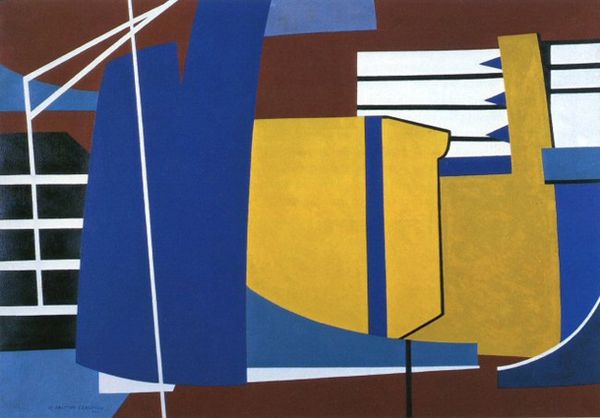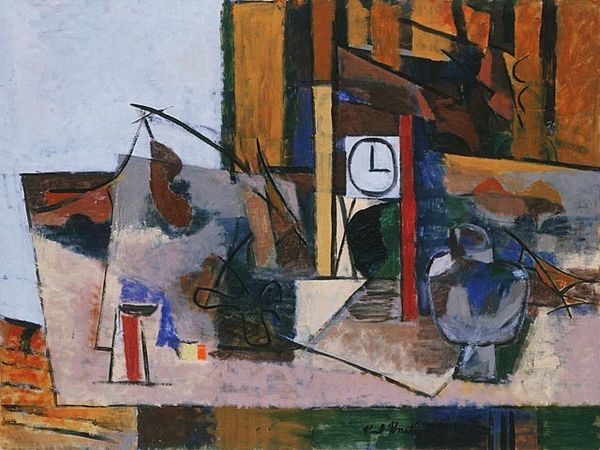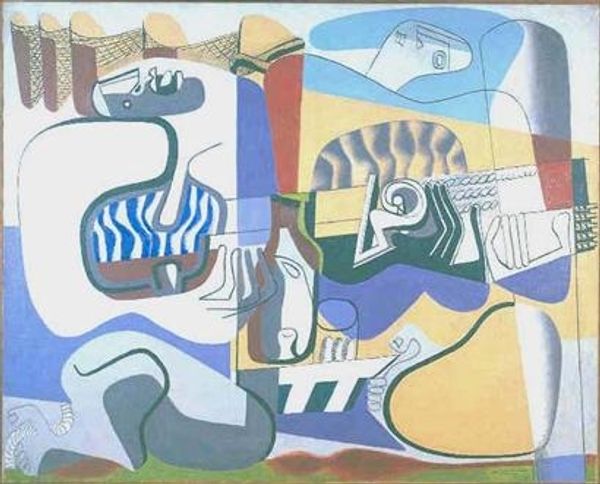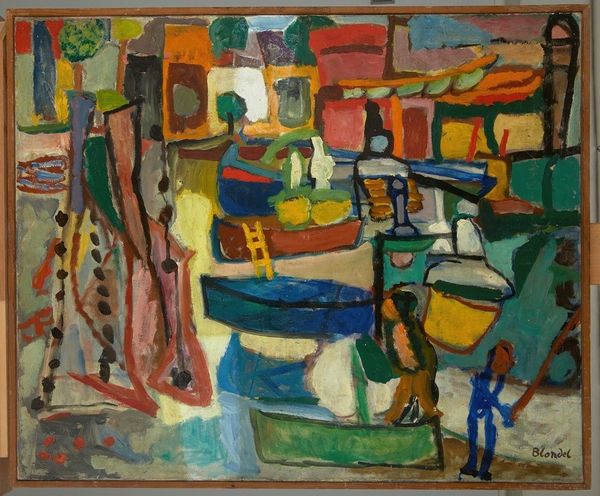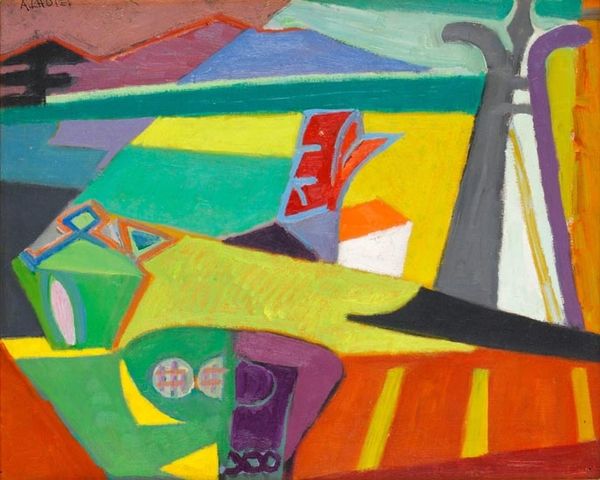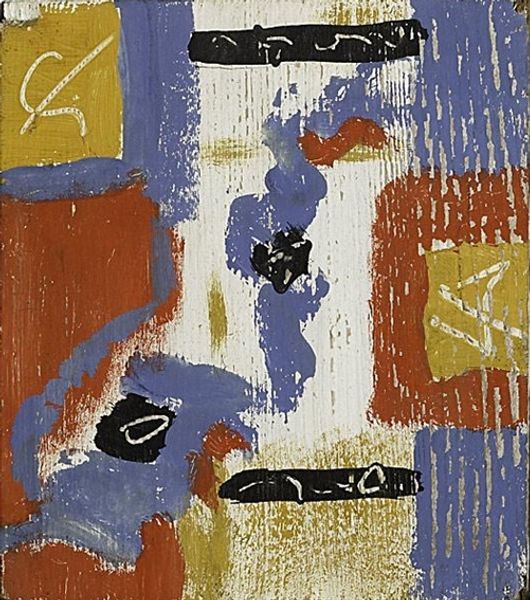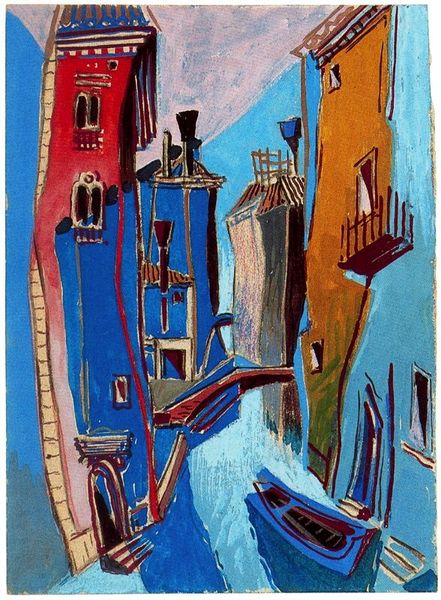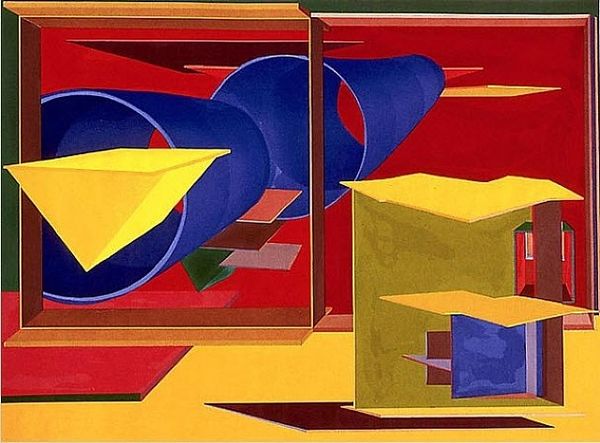
painting
#
cubism
#
painting
#
landscape
#
geometric
#
naive art
#
cityscape
#
modernism
Copyright: André Lhote,Fair Use
André Lhote’s painting ‘Le Nile’ captures an abstracted view of the Nile River. Lhote was working in the wake of colonialism, when European artists frequently looked to other parts of the world for inspiration, a practice that often romanticized or exoticized non-Western cultures. In this painting, we see Lhote’s approach to cubism, simplifying the landscape and boats into geometric forms. The pale blues, yellows, and greens create a serene, dreamlike atmosphere, but it's important to consider whose dream this is and who is allowed to dream. The Nile, a cradle of civilization and a lifeline for Egypt, becomes a picturesque scene viewed through a European lens. Lhote's aesthetic choices reflect a desire to find harmony and order in the world, yet it's worth asking how this vision aligns with the lived experiences of those who call the Nile home. By focusing on the visual elements, we can also consider the broader implications of cultural representation. The painting invites us to reflect on how artists engage with different cultures, and whose perspectives are prioritized.
Comments
No comments
Be the first to comment and join the conversation on the ultimate creative platform.

